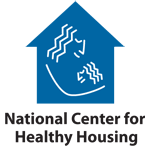|
|
Materials & Furnishings
We do not strictly control Google ad content. If you believe any Google ad is inappropriate, please email us directly here.
Sort results by: Date Added | Alphabetically - One of the easiest and most cost-effective ways to reduce energy use at home is to ensure that your home is properly insulated.
- A few things to keep in mind when choosing solid wood over man-made.
- Specialty glass work helps make a house a home with very little impact on your family's health.
- Phthalates are a group of chemicals used in the manufacture of plastics. Here's how they may affect your health.
- It’s durable, non-toxic, non-staining and easy-to-clean.
- It turns out the chef's kitchen is extremely practical.
- Study samples measured less than background levels
for radon, radiation.
- A major study published in Human Reproduction (January 2009), a European reproductive medicine journal, has found that pregnant women and women of child-bearing age in the United States are at greater risk than previously thought for infertility and reproductive problems as result of exposure to the toxic Teflon chemical PFOA (perfluorooctanoic acid).
- The net cost of owning a green home can be comparable to that of owning a conventional home – sometimes even less.
- Just as we are seeing a need for a more holistic approach to medicine, we need to start looking at houses in a holistic manner.
- Where to put and how to stock a safe work area.
- Location, preventive measures and proper working conditions are essential for a safe and healthy home workshop.
- The National Green Building Standard (ICC 700-2008) for all residential construction work including single-family homes, apartments and condos, land development and remodeling and renovation has been approved by the American National Standards Institute.
- What is known about tight construction, why it is a good idea, and how it is integral to systematic house design and construction.
- Most people have heard that tight houses cause indoor air pollution. Actually, this represents a simplistic view of the problem. Tight construction is, in reality, part of the solution. This article explains why.
- Going green may be easier than you think.
- What you need to know about LEED for Homes.
- UL Environment Inc. was created in response to the increase demand for environmentally sustainable products, and its services will help industries and the public make sense of "green" claims while helping manufacturers maintain transparency and credibility in the marketplace.
- What if residential color schemes offered more than personal expression? Could they make a home safer to live in?
- Can your house breathe?
We do not strictly control Google ad content. If you believe any Google ad is inappropriate, please email us directly here.



Information provided by The Healthy House Institute is designed to support,
not to replace the relationship between patient/physician or other qualified
healthcare provider.
Education Partners
Ads, ad links, products and content on this page are not necessarily endorsed by these organizations.
|

We do not strictly control Google ad content. If you believe any Google ad is inappropriate, please email us directly here.
|








